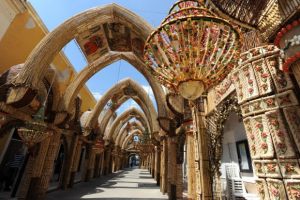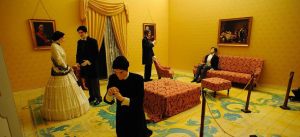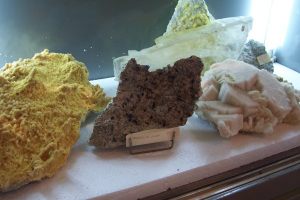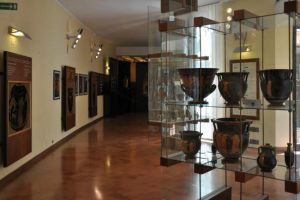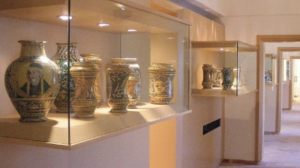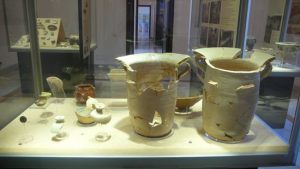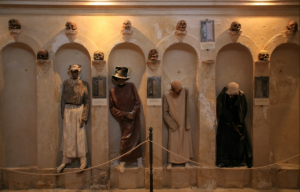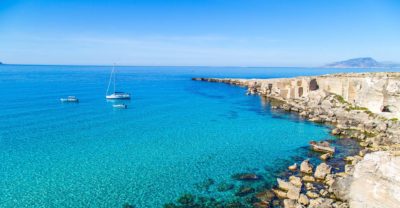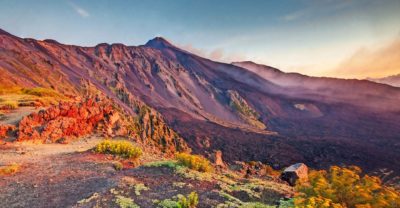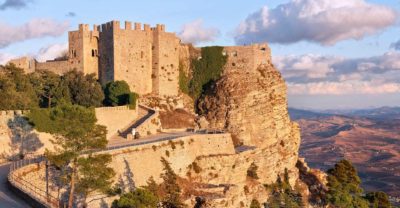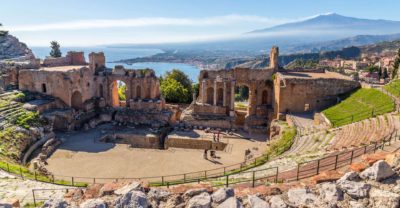Arts and Culture
Agrigento
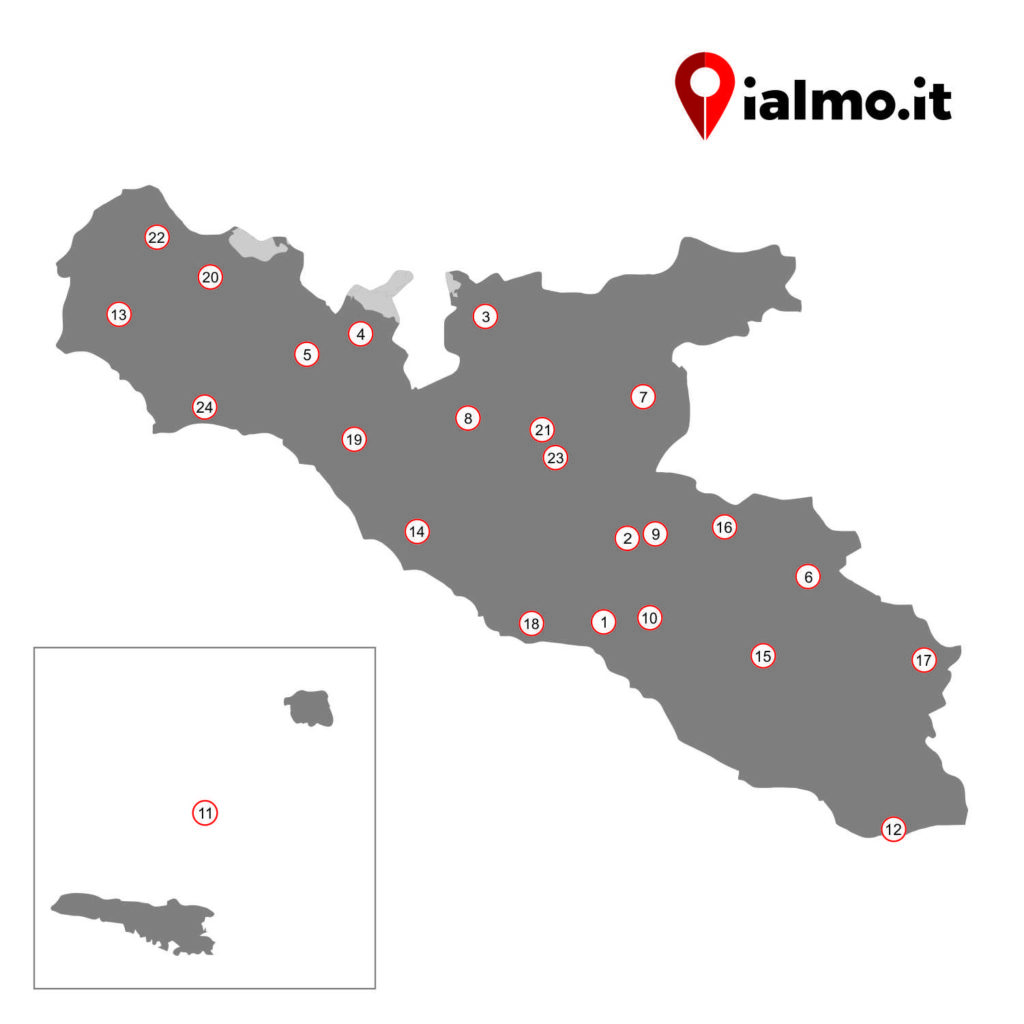
San Nicola Regional Archaeological Museum collects prehistoric and Greek-Archaic material; Civic Museum preserves and preserves the paintings made between the fourteenth and eighteenth centuries but also medieval and Renaissance sculptures and works of modern painting; Documentarium Antiquarium, at Villa Aurea; Iconographic Antiquarium, at Casa Barbadoro and where reproductions of prints, engravings and iconographies are exhibited; Antiquarium of the Fortifications, at Casa Morello; Paleochristian-Byzantine Antiquarium, at Casa Pace; “Le stoai” museum exhibition; Luigi Pirandello Christmas House and Luigi Pirandello Museum Library; Museum of Human Paganism in the Prehistoric and Protohistoric Studies Center, at Palazzo Celauro; Museum of Natural Sciences Empedocles at the Liceo Classico Empedocle, dating back to 1848; Museum of the Cathedral divided into the “Historical-Archaeological Museum”, “Diocesan Museum” and “Treasure of the Cathedral”; Permanent Exhibition Excellence of Liberty at the College of the Filipino Fathers; House Museum of the Liguorini Fathers; Medieval Museum, at the monumental complex of Santo Spirito; Chiaramontane factories; Municipal historical archive; Living Museum of the Almond Francesco Monastra; Museum of ancient scientific instruments Michele Foderà; Museum of the ancient units of measurement of the Chamber of Commerce; Tolì Tolì Museum of Play and Toy; Museum of Intangible Heritage, at the College of the Filipino Fathers; Exhibition of the Crib, set up during the Christmas period in the district of Villaseta, exhibits over one hundred artistic cribs; Civic Museums, divided into different sections: ethno-anthropological section, nature and show section, archaeological section, art gallery, photographic section. Still to be reported in Agrigento: the majestic Luigi Pirandello Theater built in 1870 and inaugurated in 1881; the Old Post Theater and the Valley of the Temples Theater located in the heart of the Valle dei Templi Archaeological Park.
Diocesan Museum inside the Mother Church of the Santissimi Tre Re, inaugurated in 2017, and Crypt Museum in the Church of the Rosary.
The Carmelo Cammarata house-museum houses some works by the local sculptor, made according to techniques typical of Sicilian sculpture.
Museum of Muceb ceramics, Museum of mummies and Museum of the Venerable Brother Andrea da Burgio.
The Civic Museum of Palazzo della Signoria houses a permanent exhibition of works by the sculptor Salvatore Rizzuti while the Museum of the farmer and shepherd, housed in a part of the Grandi Grotte Sicane complex and created in 1998 by Vincenzo Mulè, offers a review of agricultural tools -pastorals belonging to the Mulè family.
The Badia Ethno-anthropological Museum collects artifacts mainly coming from private donations and borrowings that nowadays make up a collection that offers a rich and articulated testimony of the rural culture as well as the everyday crafts and practices of everyday life connected to it. characterized the historical period between the end of the nineteenth century and the first half of the twentieth century. Noteworthy is the Social Theater designed in the early twentieth century by the architect Ernesto Basile and which, recently restored, reopened to the public in 2009.
Ethno-anthropological Museum of the materials of the peasant civilization and of the crafts. Recently founded thanks to the contribution of the A.A.C. and of the Pro Loco, the Museum is important for the protection and conservation of popular culture of the past.
Ethno-anthropological museum, housed in the restored rooms of the ancient water mill, collects the still existing evidence of the Ciancianese past and its mining and peasant civilization in particular.
The Antiquarium and the Museum of the mines are housed inside Palazzo Bellacera, an ancient baronial residence.
The ornithological museum and the collection of minerals on the second floor of the Biblioteca-Museo Antonio Mendola have recently been moved to the “Timilia” hall of the Chiaramonte Castle.
The Museum of Trust and Dialogue for the Mediterranean was inaugurated on 3 June 2016 by the President of the Republic Sergio Mattarella as a sub-session of the Archaeological Museum of the Pelagie Islands.
In the halls of the Civic Museum the historical memory of the center is kept and the archaeological finds preserved here are of great importance because they bear witness to the prehistoric origins of the site. Noteworthy is the small Teatro Re, recently restored and finally active after decades of neglect.
The Malacological Museum collects almost 5,000 shells donated to the municipality by the scholar Vanna Rotolo Lombardo and coming both from the sea of Porto Palo and from all the seas of the world while the Civic Museum houses sculptures, watercolors, ceramics and porcelain donated to the city by the artist Rita Gallè .
Established in 1991, the Museum of Peasant Civilization preserves the rural traditions of the municipality of Montallegro.
The Museum of graphic art, located in the Malfitano palace, houses numerous lithographs, etchings and aquatints, while the permanent exhibition of the ancient dress, located in the halls of the medieval castle, houses clothes, military uniforms and accessories of everyday life.
The MURA Museum dedicated to contemporary art and housed in the premises of the Castelluccio and the 19th century municipal theater Regina Margherita should be noted in the municipality.
In the Salvatore Lauricella Archaeological Museum of Ravanusa many of the numerous departments found in the archaeological site of Monte Saraceno are preserved. Among the finds, the indigenous vases decorated with incision and impression and a vase on high feet that served to burn the cereals in honor of the deities are of particular importance.
The Teatro Costabianca, located at the foot of the Bay of Capo Rossello, is a theater with a Greek cavea typically planted in Segesta. The cavea is divided into two sectors and five wedges for a total of 17 steps capable of holding 1500 spectators.
The permanent ethno-anthropological Museum was founded in 1989 thanks to the Ribera Verde association which has collected more than 4000 artefacts from the peasant, pastoral and artisan culture of this territory.
The Archaeological Museum of Palazzo Panitteri, inaugurated in 2013, collects valuable findings from the archaeological site of Monte Adranone. Emblem of the museum is the Demeter from the Belle Chiome.
The Sylvie Clavel Museum of Textile Sculptures, located in the rooms of the former monastery of Santa Caterina, houses the works of the French artist.
The Picture Gallery of the Gianbecchina Institution, established in December 1997, displays some works donated by the master to his hometown and represents for Sambuca a permanent laboratory in which artistic and cultural projects are born and which aim at enhancing the potential of the territory and promoting the tourism.
The Municipal Theater the Idea is the symbol of the culture and passion of the people of Sambuca di Sicilia. The original structure, built between 1848 and 1851 by local artisans at the expense of a group of bourgeois, was damaged by the earthquake that hit the Belice valley in 1968. For this reason it has undergone a long restoration and today it has returned to the city in all its splendor and with a full program of events and shows. It has the characteristic horseshoe shape, three tiers of boxes, the stalls and a large stage.
The Museo degli Archi di Pasqua was created with the aim of preserving the pieces of each edition of the traditional arches made during the Easter period by the citizens of San Biagio Platani. The Museum presents 8 exhibition halls, a room for 3D projection and a laboratory room.
In the Museo del Gattopardo are preserved reproductions of the original manuscript and typescript of the famous novel by Giuseppe Tomasi di Lampedusa while in the Museum of Memory are exposed hundreds of photographs that tell how was life in the villages of the Belice Valley before the devastating earthquake of January 15, 1968.
In December 2015 the Musam Archaeological Museum was inaugurated and for the occasion the British Museum temporarily put at disposal a single piece almost three thousand years ago: a golden bowl found in one of the tombs of the ancient city and donated to the British Museum in 1772.
There are numerous museums in the territory of the municipality of Sciacca: Antiquarium of Monte Kronio; Sciacca Carnival Museum; Sea Museum; Toy Museum; Casa del Sapone and Veneroso Collection.
